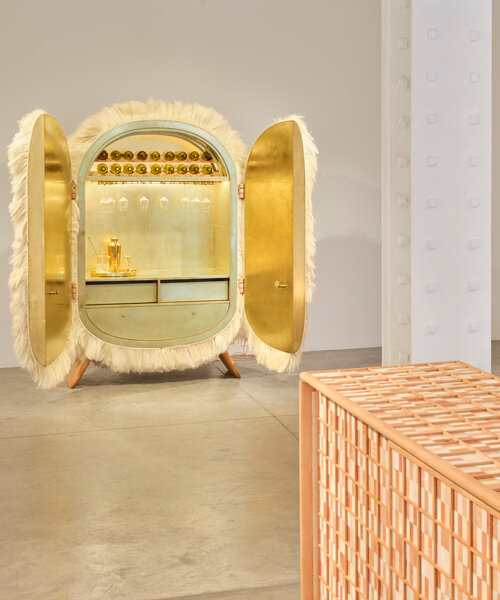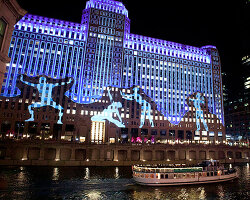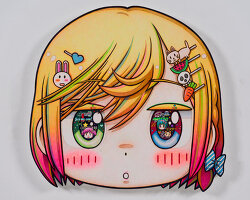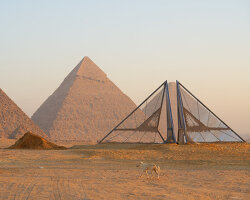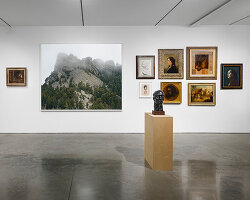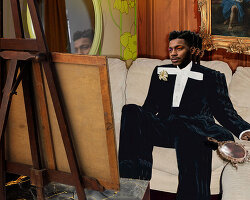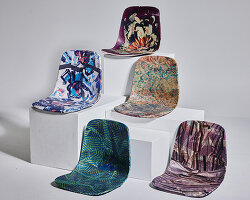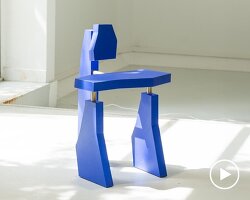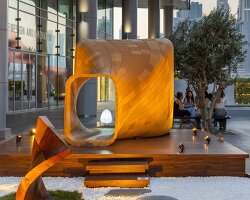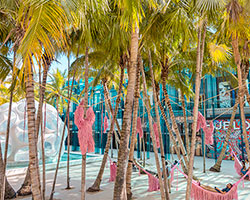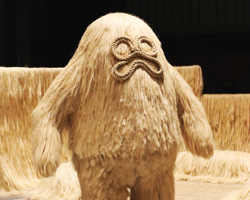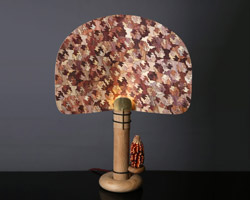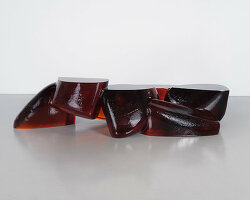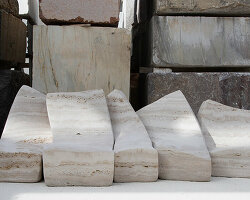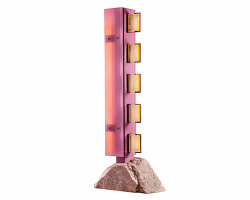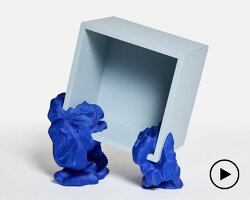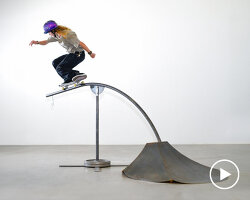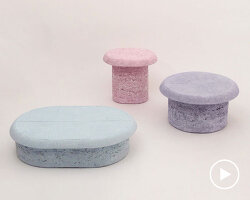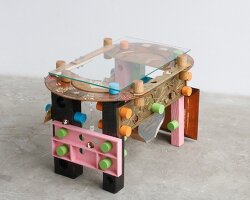ghosts of our towns AT FRIEDMAN BENDA NEW YORK
Fernando Laposse‘s exhibition ‘Ghosts of Our Towns’ opens at Friedman Benda‘s New York gallery, shedding light on the decline of biodiversity and rural life in Mexico. Laposse’s work explores the impact of trade and consumption patterns on small farming communities, leading to environmental crises, loss of biodiversity, community disintegration, and forced migration. In this show, the designer focuses on three materials: corn, agave, and avocado, using them to tell a narrative of deteriorated environments and social abandonment.
‘The exhibition’s title is ‘Ghosts of Our Towns,’ which plays with the term ‘ghost town.’ This choice is significant because most of the work displayed here is based on our efforts in an indigenous community in Mexico.[..] When we refer to ‘ghosts of our towns,’ we are alluding to the transformation over time, as these towns have nearly faded away but still retain a trace of their existence. Our goal is to guide them back to their roots, embracing their traditional agricultural methods once more,’ Fernando Laposse tells designboom during the exhibition opening at Friedman Benda.
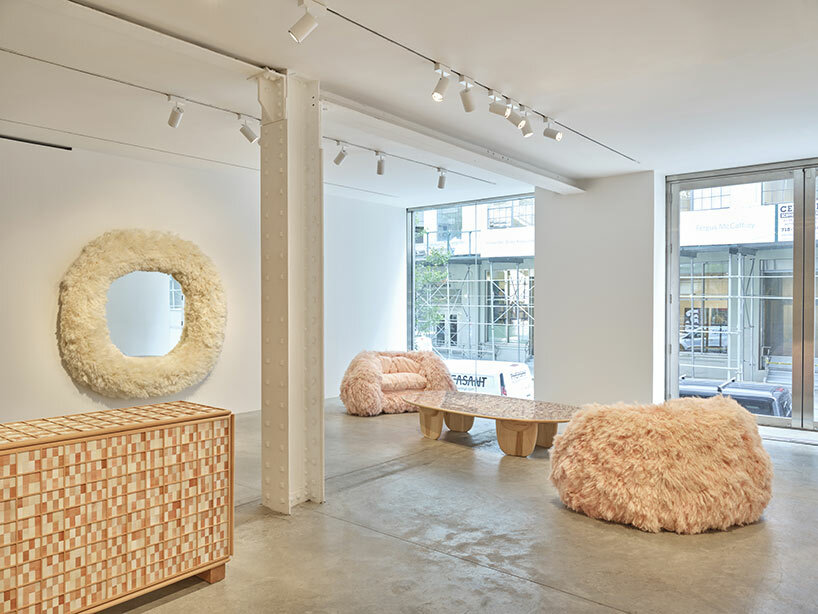
exhibition view | all photography by Timothy Doyon, courtesy Friedman Benda and Fernando Laposse, unless stated otherwise
fernando laposse revives indigenous wisdom
Highlighted at Friedman Benda’s New York gallery, Fernando Laposse uses avocado, agave, and corn to reflect a landscape scarred by forgotten knowledge and forced erasure. Amidst this bleak reality, hope emerges from communities returning to traditional ways of life and production. The artist‘s collaborative project in Tonahuixtla — a small village in the Mixtec region of Puebla — exemplifies this approach, aiming to restore both the land and the community while innovating with native materials and craft techniques. His work emphasizes the importance of sustainable agricultural practices. By involving himself in the entire process, from planting to designing, Laposse highlights the connection between land regeneration and community revitalization, ultimately celebrating design as a tool for renewal.

Ghosts of Our Towns at Friedman Benda New YorkGhosts of Our Towns at Friedman Benda New York
interview with designboom
In an interview with designboom at the Friedman Benda opening, Fernando Laposse explains that ‘Ghosts of Our Towns’ is a response to the transformation of indigenous communities into ghost towns due to shifts in agriculture and trade dynamics. He underscores the importance of raising awareness and fostering change, even if it starts on a local scale. Laposse’s unconventional use of materials, such as agave fibers and avocado dyes, showcases the indigenous knowledge and innovative approaches employed by the communities he collaborates with. The exhibition offers a profound exploration of sustainability, tradition, and resilience in the face of industrialization and globalization. Read below for our interview with the artist and explore the works of ‘Ghosts of Our Towns’ at Friedman Benda Gallery, at 515 West 26th Street, from Septmeber 7th — October 14th, 2023.
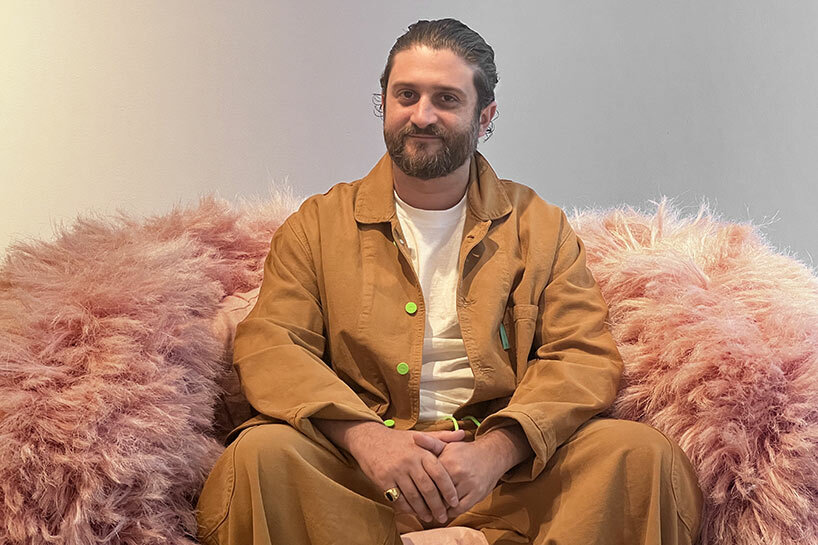
Fernando Laposse, portrait | image © designboom
designboom (DB): Can you provide an overview of your exhibition at Friedman Benda and what inspired it?
Fernando Laposse (FL): The exhibition’s title is ‘Ghosts of Our Towns,’ which plays with the term ‘ghost town.’ This choice is significant because most of the work displayed here is based on our efforts in an indigenous community in Mexico. We have been collaborating with this community every other week. This community is situated less than 50 kilometers away from the world’s oldest archaeological site of corn domestication. This location holds immense importance as it is where the cultivation of corn originated. Unlike wild corn, the corn we know today has been cultivated and developed by indigenous people for thousands of years.
Over the past eight years, our focus in this town has been to encourage a return to traditional agricultural methods. The community had been pushed away from these practices due to globalization pressures, particularly stemming from the free trade agreement between Mexico and the United States. This agreement drastically changed the corn market, leading to a two-thirds devaluation in corn prices within a single year. So people had to increase their planting efforts three times more to maintain their income. This shift away from traditional farming practices triggered a migration away from these towns, transforming them into ghost towns.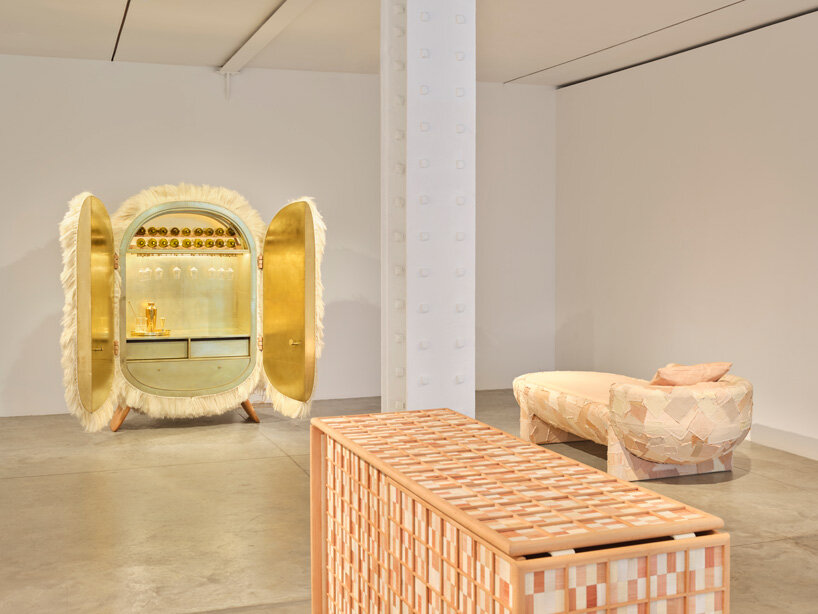
(FL continued): So, when we refer to ‘ghosts of our towns,’ we are alluding to the transformation over time, as these towns have nearly faded away but still retain a trace of their existence. Our goal is to guide them back to their roots, embracing their traditional agricultural methods once more.
The problem is the indigenous farmers off-balance their traditional knowledge — which was always about taking care of the soil — so badly because of this switch to industrial agriculture. And they lost the only thing they had. They never really had money, but they always had the ability to feed themselves. So what has happened with a lot of these towns, especially in developing countries like Mexico, is trying to force a system that has no place. These people are never going to be industrial-scale producers of corn. It’s a false idea of progress. So what does progress mean? You’re talking about a developing economy, but developing towards what? Because in a way, we still have time to avoid the mistakes that we’re making in other places in the world.
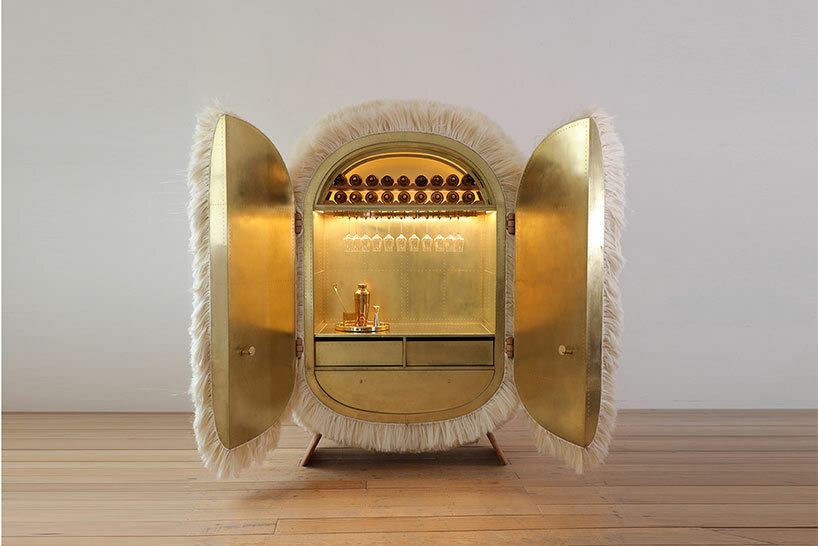
Hair of the Dog, 2023, Fernando Laposse
DB: So these works are a form of social activism in that sense; you’re trying to raise awareness?
FL: I am trying to raise awareness, but you never know how much impact we can achieve. The metrics of success are in the change we’ve instigated within this one community. My work isn’t necessarily focused on changing the entire world. Instead, we focus our efforts on one town, which now comprises only about 150 people. Over nearly nine years, beginning in 2015 with agricultural initiatives, we’ve seen promising and positive outcomes that benefit both this community and the environment.
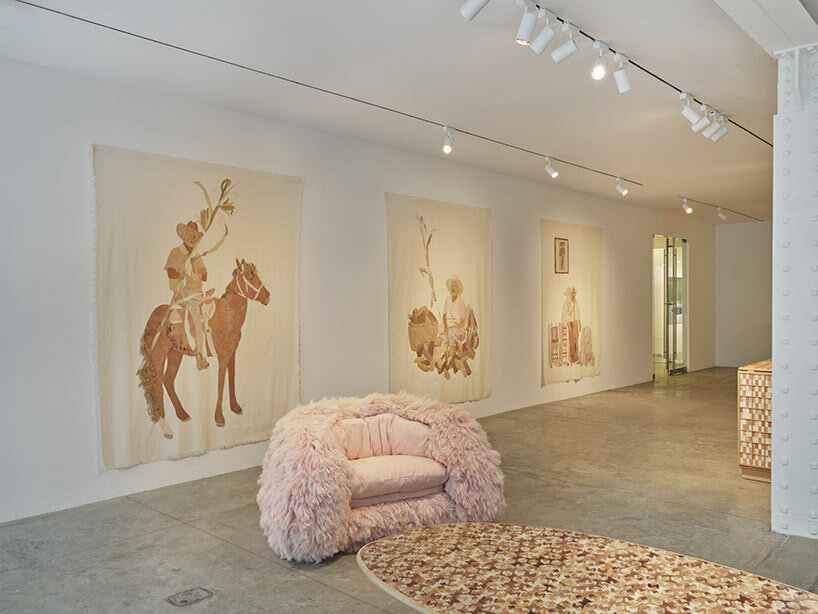
exhibition view
DB: Your work often involves unconventional materials, and you have used three specific materials consistently in this exhibition — corn husks, agave, and avocado. Could you elaborate on them?
FL: The table and the two cabinets are made with a material called ‘totomoxtle,’ which is the indigenous word for corn husks. The colorway of the table is similar to one I’ve used frequently in the past. But if you notice, it’s actually a completely different colorway. This is really interesting when you realize that it was the farmers who, after reintroducing these corn varieties, began developing new hybrids. They achieved this through hand-pollination, like mixing red and white corn to create the peachy colors you see here. So they are not dyed in any way — that’s how they grow in the plant.
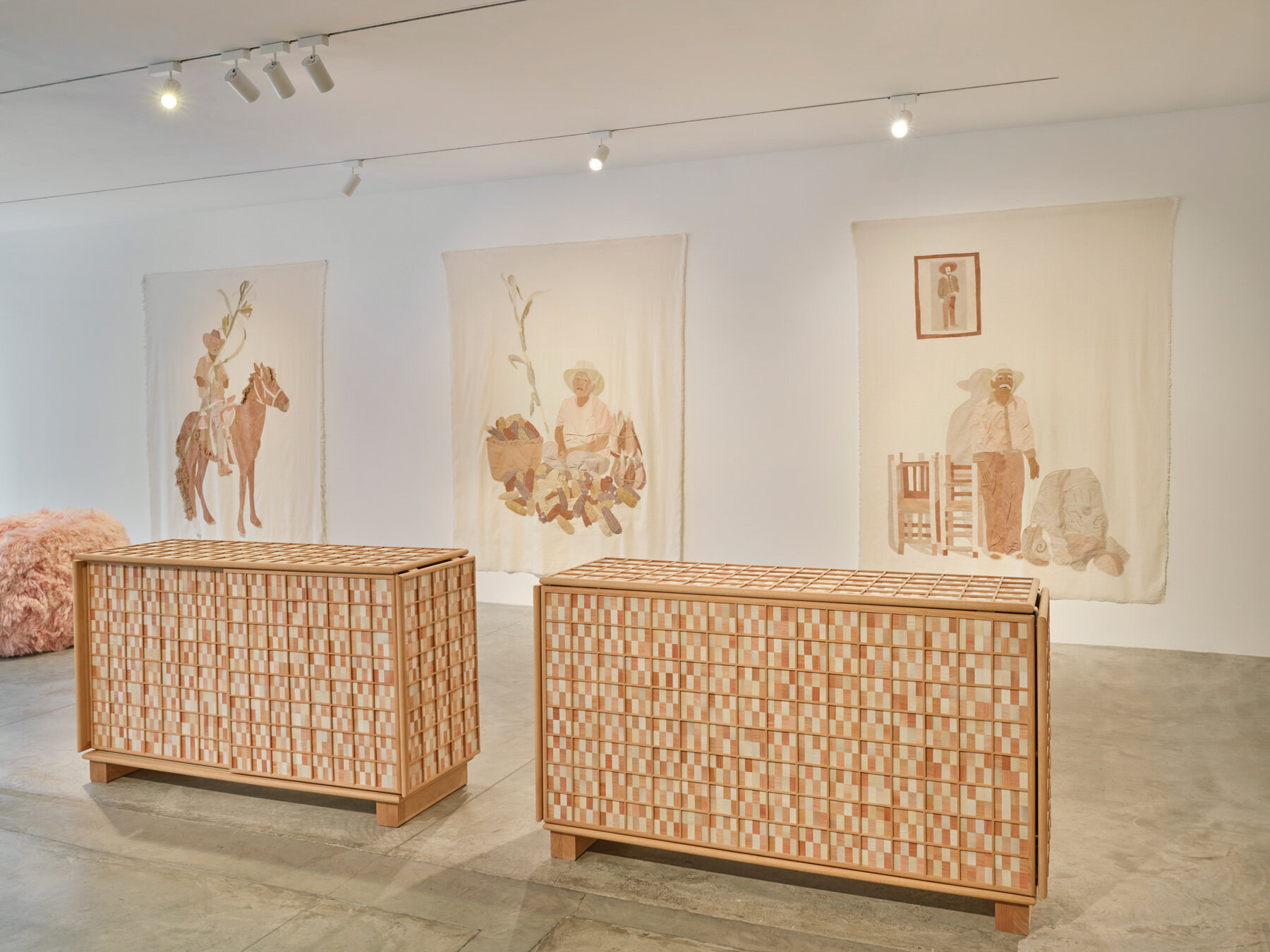
(FL continued): It’s a really cool design exercise because although I’m using my skills as a designer, the farmers are ‘bio-designing.’ Their skill is their indigenous technology and knowing these plants so deeply to create these hybrids. This showcases the success of our project, as they are not only focused on reintroducing their traditional corn but are also considering its implications for the future. They are actively engaged in working with their native corn varieties to ensure their continued cultivation and development.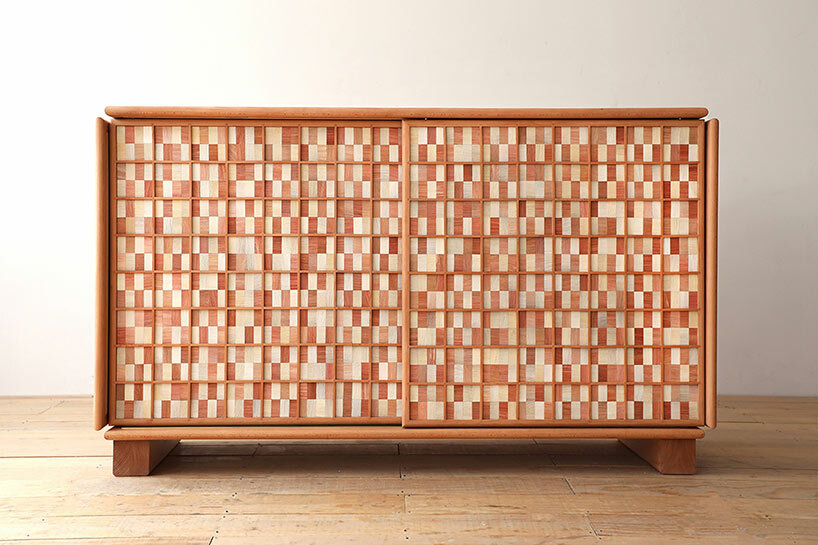
Corn Kumiko, 2023, Fernando Laposse
DB: Do you use paints or stains at all?
FL: Yes, there are dyes — for example, the pink couches are agave, and they’re dyed with an insect that grows in a cactus. It’s another amazing indigenous technology, where they managed to domesticate an insect and selectively breed it to the point where it creates an abnormal amount of pigments in their bodies. When they die, they get crushed into a powder, and it makes this super intense red. All the hairy pieces are agave, which relate to the town because their main issue was when there was a switch to this other system of agriculture, there was such severe erosion that they couldn’t grow anything anymore. So what we’ve been doing is planting the Agaves along the mountains in lines. We make deep holes about a meter deep, and we plant an agave in front of it. And when it rains, the water gets slowed down by these ditches, and the Agaves start to hold the little soil that it creates along with all the organic waste of the same plant.
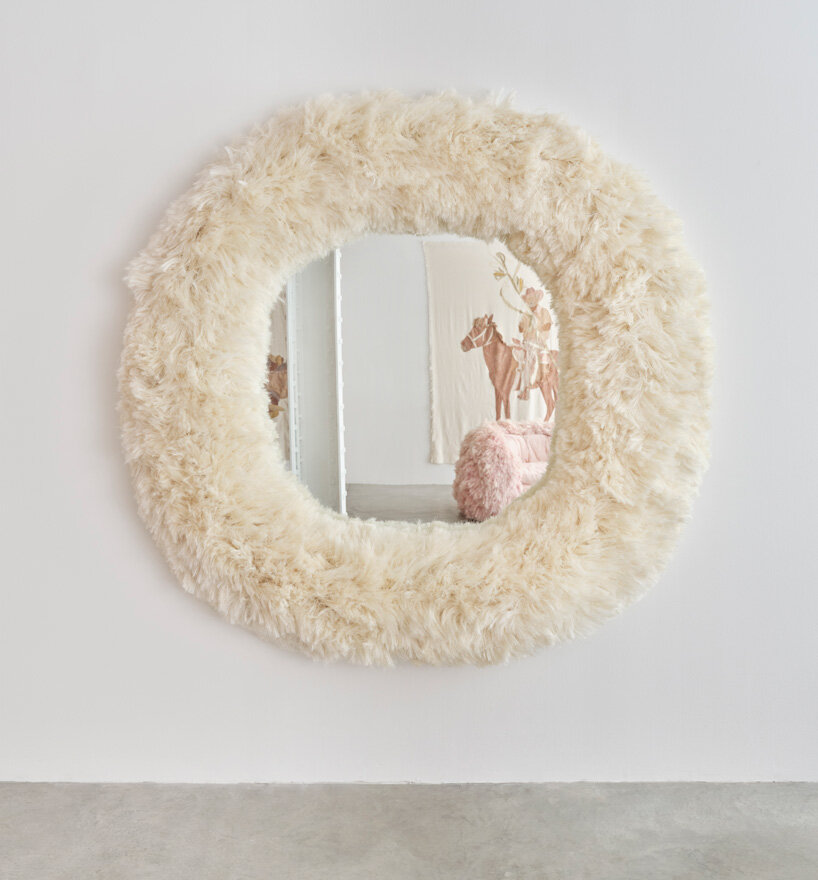
Furry Mirror, 2023, Fernando Laposse
(FL continued): So agaves are what’s called pioneering plants. In these mountains, completely eroded to the point where it’s just rocks and sand, they’re the only plants that can really grow there with basically no soil and no water. But they grow quite fast, much faster than a cactus, for example. So they start to create the right conditions for the wild shrubs to come back. By now, we’ve planted around 150,000 plants. So while mezcal or tequila growers kill the whole plant, we just prune them. With these leaves that we prune, we crush them to create fibers to weave into this hairy material.
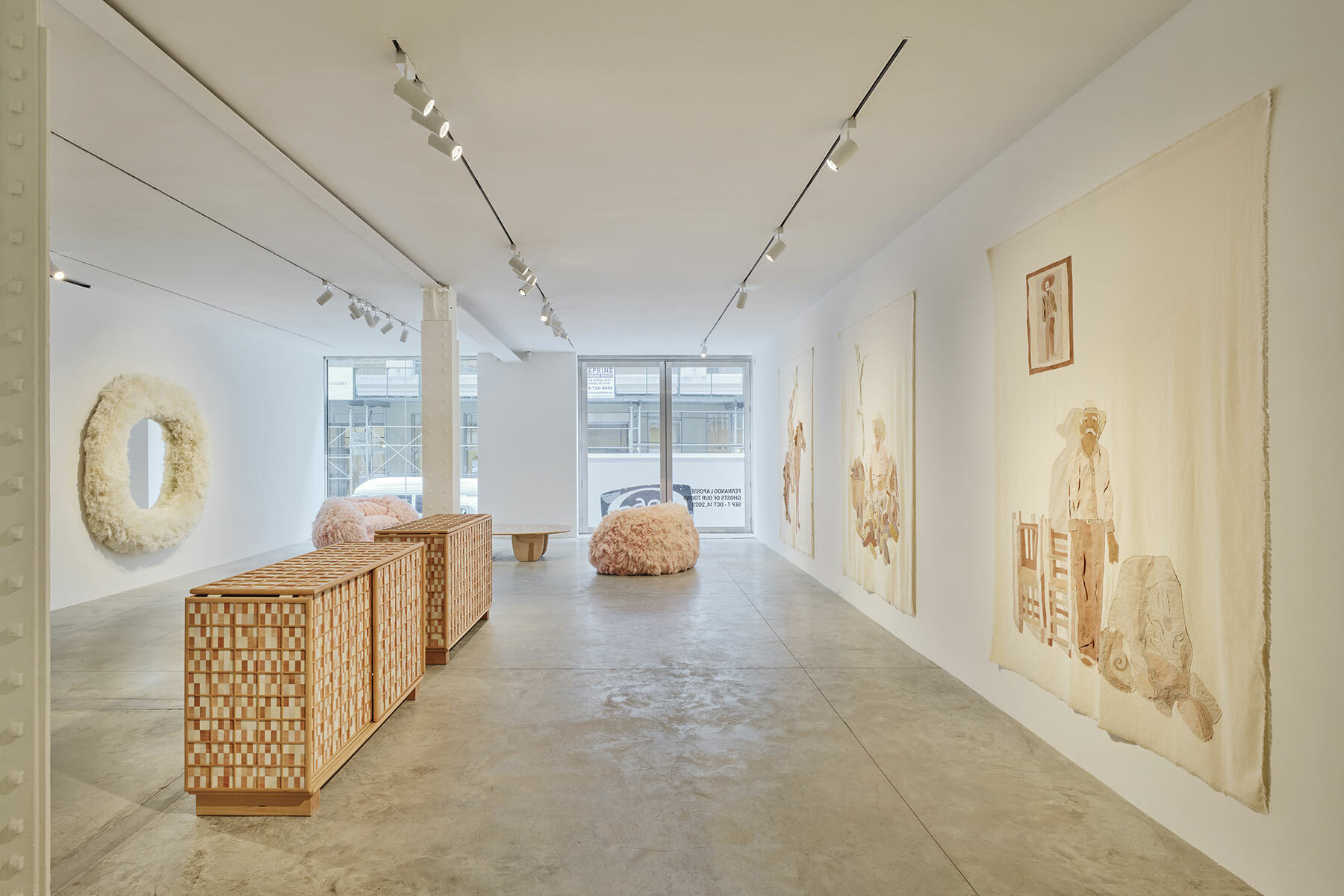
DB: Where does the avocado come in?
FL: These hanging portraits are made of cotton and dyed with avocado pits and flowers. This is a preview for my next big project which is going to be about avocados. It’s going to be unveiled at the National Gallery of Victoria in December. These three characters are based on photographs that I’ve taken of real people in the village. For example, Emiliano: He’s standing next to this stone with snakes carved into it, which we found in one of the cornfields. We realized that it was an ancient relic. An anthropologist estimated it to be dated to 400 B.C. So it was a really incredible archaeological find that we made. It reveals the richness of the area in terms of its indigenous heritage.
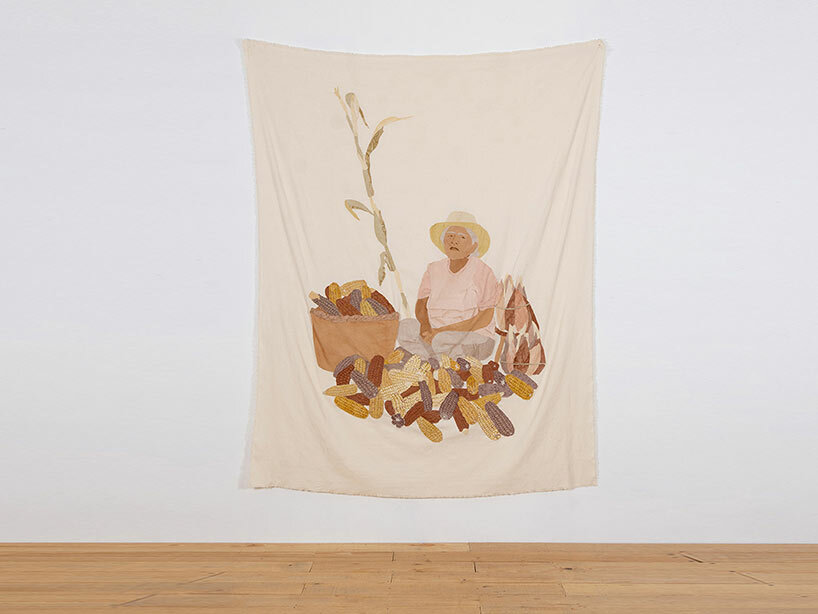
Doña Lucy, 2023, Fernando Laposse
(FL continued): The next character is Lucy, who is one of the elders. There is no private land in this area — everything is owned by the community, and land cannot be bought or sold. Everything is decided with an indigenous assembly. She’s the first woman to ever lead the indigenous assembly. She’s also the woman that handpicks all the seeds at the beginning of every season. So in a way, all of the decisions and all of these new variations of the corn go through her hands.
This other character is named Saul. I used to be friends with him when we were kids because this is a village that I’ve been visiting since I was young. He was one of the many men that migrated to the States. He spent around eight years in the States as a farmworker. He followed the seasons — from almonds in California to oranges in Florida in the winter, and everything in between. It’s a shame we lost really good farmers in Mexico just to migrate to the States because of this switch in the system. Now a lot of them are coming back. A lot of design projects highlight migrants arriving in the States, but what about returning migrants? It’s a whole different set of challenges.
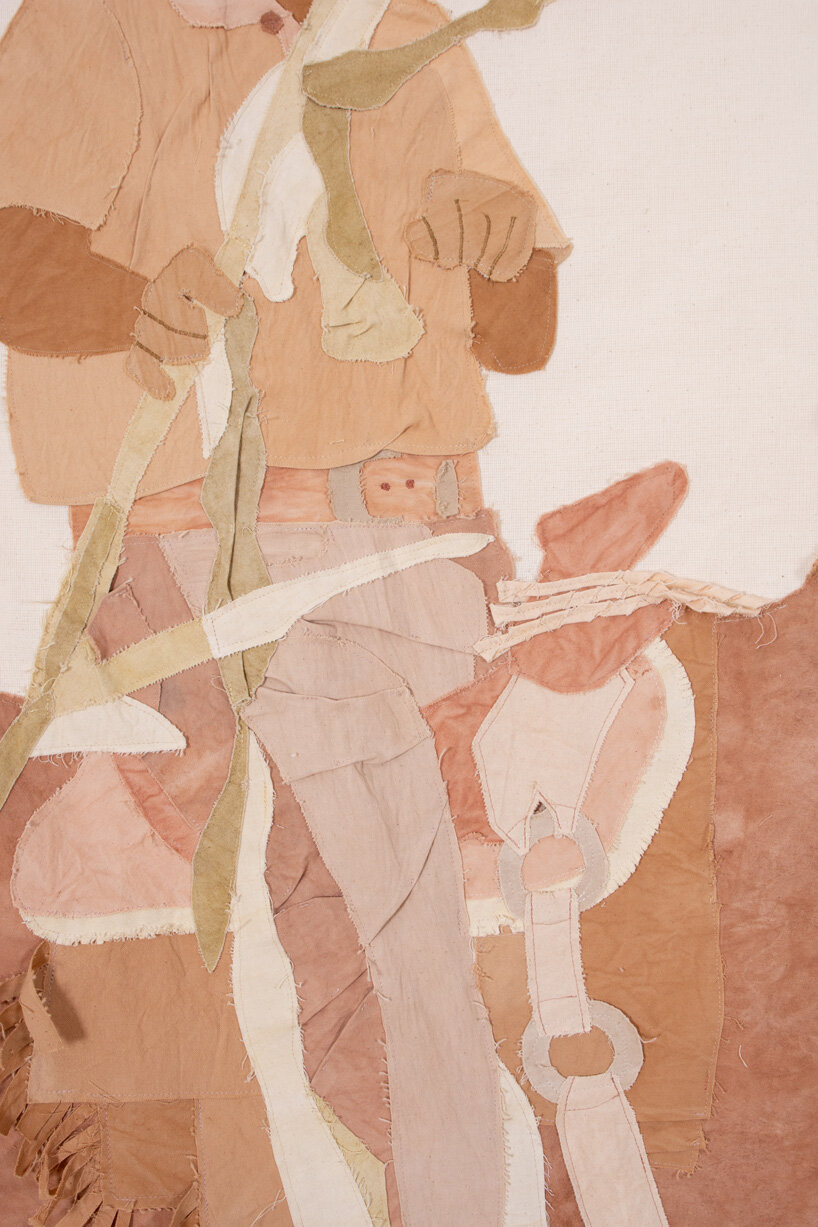
Saul (detail), 2023, Fernando Laposse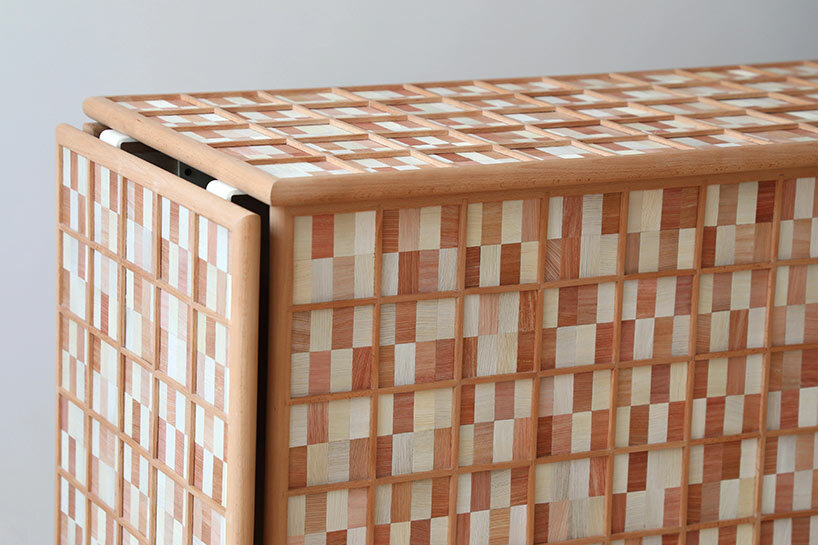
Corn Kumiko (detail), 2023, Fernando Laposse
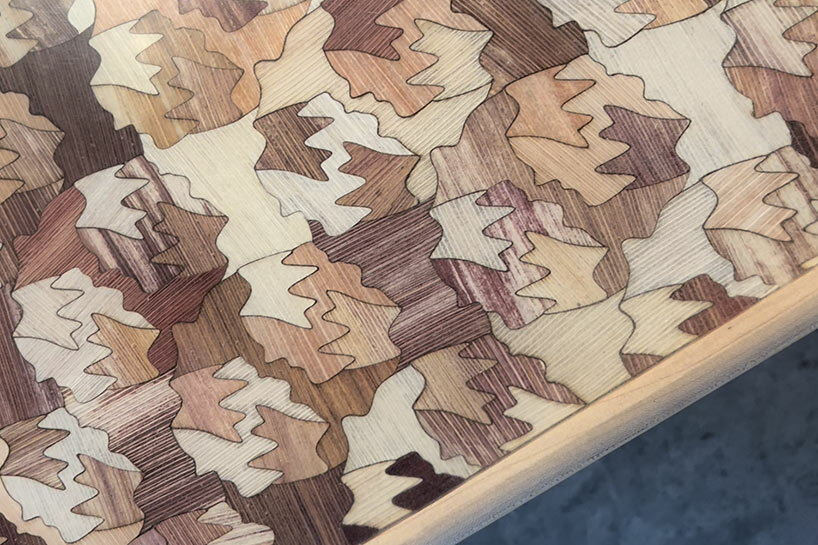 Totomoxtle Snake Coffee Table (detail), 2021 | image © designboom
Totomoxtle Snake Coffee Table (detail), 2021 | image © designboom
project info:
exhibition title: Ghosts of Our Towns
artist: Fernando Laposse | @fernandolaposse
gallery: Friedman Benda | @friedman_benda
location: 515 W 26th St. New York, NY
happening this week! holcim, global leader in innovative and sustainable building solutions, enables greener cities, smarter infrastructure and improving living standards around the world.
art interviews (158)
chair design (665)
design interviews (73)
fernando laposse (7)
friedman benda (66)
table design (147)
PRODUCT LIBRARY
a diverse digital database that acts as a valuable guide in gaining insight and information about a product directly from the manufacturer, and serves as a rich reference point in developing a project or scheme.
